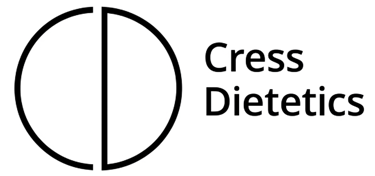Why Culture a Probiotic at Home?
Culture probiotics in your home kitchen to wake up the freeze-dried inactive microbes into active therapeutic ones.
PROBIOTICSFERMENTATIONMICROBIOME
5/16/20252 min read
Why Culture a Probiotic at Home?
Probiotics are dietary supplements that contain freeze-dried microorganisms, typically encapsulated for shelf stability. These microbes are dormant and must undergo a lag phase in the gastrointestinal tract before becoming metabolically active. In contrast, live probiotic cultures from fermented foods are already active and can exert therapeutic effects more rapidly.
This article outlines the scientific rationale and practical benefits of culturing probiotics in a home kitchen. It also explains how this process can improve microbial viability, strain-specific efficacy, and user experience.
1. Dormant vs. Live Bacteria
Freeze-dried probiotic supplements must rehydrate and adjust to gut conditions before they can replicate or metabolize. This process—known as the lag phase—reduces the likelihood that the bacteria will survive and colonize effectively, particularly given the continuous transit of food through the digestive tract.
Live probiotic cultures from fermented foods are already in an active state (typically the log or early stationary phase of growth). These microbes have already adapted to a growth medium and are more resilient to stomach acid and bile, increasing their chances of reaching the intestines in a viable state.
2. The Advantage of the Log Phase
Microbes in the logarithmic (log) phase are in active replication and are producing beneficial metabolites such as lactic acid, bacteriocins, and enzymes. Consuming probiotics during this phase increases both potency and efficacy, as the microbes are already metabolically engaged and better positioned to support host functions upon ingestion.
Culturing at home allows the user to control fermentation timing, ensuring consumption during the peak window of microbial activity.
3. Traditional Yogurt vs. Patented Therapeutic Strains
Traditional yogurt is typically fermented with Streptococcus thermophilus and Lactobacillus delbrueckii subsp. bulgaricus. These strains improve lactose digestion and support basic gut health but are not intended for targeted therapeutic use.
Modern probiotics, such as those found in BioGaia's Gastrus, contain patented strains like:
Lactobacillus reuteri DSM 17938
Lactobacillus reuteri ATCC PTA 6475
These strains have been studied for their effects on inflammation, immune modulation, bone density, and gut-brain signaling. They are not present in common fermented foods and must be purchased as proprietary formulations. Culturing these strains at home enables higher microbial counts per serving and extends the use of each dose.
4. Enhanced Potency and Cost Efficiency
One capsule of a patented probiotic may contain 100 million to 1 billion CFUs. When cultured in milk or a suitable medium, this single dose can multiply into tens of billions of CFUs per batch. This amplifies microbial potency and reduces long-term cost, especially when incorporated into regular dietary practices.
5. Ingredient Transparency and Control
Home culturing eliminates the need for additives such as capsule coatings, fillers, stabilizers, and preservatives. It also allows for control over the fermentation substrate (e.g., dairy or plant-based), sweetness level, pH, and overall product formulation.
This approach ensures better dietary alignment, allergen awareness, and user autonomy in probiotic consumption.
6. Practical and Sensory Benefits
Consuming probiotics through food (e.g., yogurt or kefir) is often more enjoyable and sustainable than pill-based supplementation. Fermented foods offer both microbial and nutritional value, combining gut health with whole-food nourishment.
Conclusion
Culturing probiotics in the home kitchen enhances microbial activity, strain efficacy, dosage consistency, and consumer control. This method integrates the scientific rigor of modern probiotic research with the practicality and tradition of fermentation. It is a viable strategy for anyone seeking to optimize gut health, reduce supplementation costs, and engage more directly with their dietary practices.
For a detailed L. reuteri yogurt recipe, visit Cress Dietetics on Etsy and use the code YOUTUBE for 25% off. You can also view video tutorials for both dairy and coconut versions on YouTube.

Nutrition & Lifestyle
Holistic approach to sustainable dietary changes.
Contact
matt@cressdietetics.com
© 2025. All rights reserved.
Terms & Conditions
